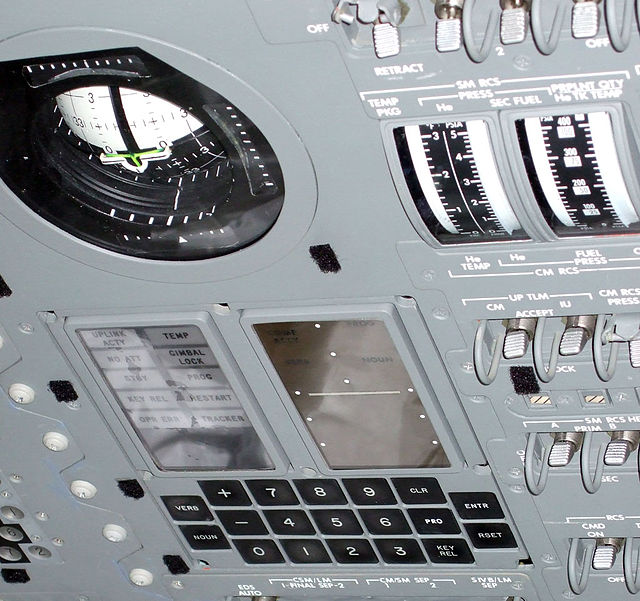Draper Laboratory is an American non-profit research and development organization, headquartered in Cambridge, Massachusetts; its official name is The Charles Stark Draper Laboratory, Inc. The laboratory specializes in the design, development, and deployment of advanced technology solutions to problems in national security, space exploration, health care and energy.
The display and keyboard (DSKY) interface of the Apollo Guidance Computer, mounted on the control panel of the Command Module, with the Flight Director Attitude Indicator (FDAI) above
The USS George Washington (SSBN-598) relied on inertial navigation while submerged and its UGM-27 Polaris missiles relied on inertial guidance to find their targets.
The operation of the International Space Station employs several Draper Laboratory technologies.
Microfluidic devices have the potential for implantation in humans to deliver corrective therapies.
Charles Stark "Doc" Draper was an American scientist and engineer, known as the "father of inertial navigation". He was the founder and director of the Massachusetts Institute of Technology's Instrumentation Laboratory, later renamed the Charles Stark Draper Laboratory, which made the Apollo Moon landings possible through the Apollo Guidance Computer it designed for NASA.
Charles Stark Draper in 1966





